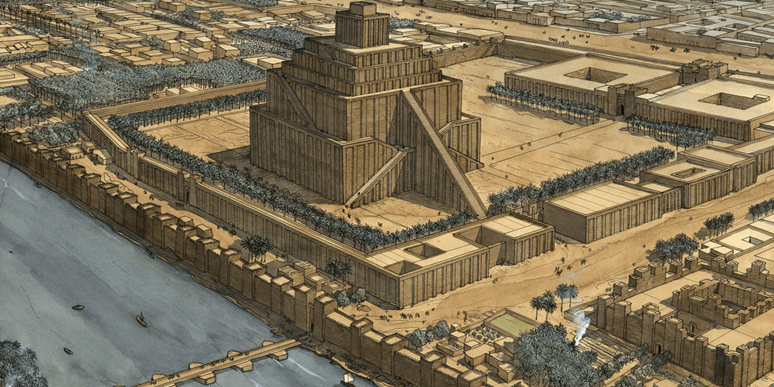Babylon is the city of civilization

The city of Babylon is located 90 km south of Baghdad, and its name is a distortion of “Bab Eli,” which means “Gate of the Gods.” It is one of the most famous ancient cities, setting examples for its greatness, the beauty of its buildings, and the culture of its people. No city is known to have continued in this prestigious position as long as Babylon, holding the reins of civilization and developing it for fifteen centuries, since the Amorites appeared there in about 1850 BC. M. (Hammurabi, the great legislator and great social reformer, was one of their kings), until Alexander the Great made it the capital of his empire. When Greek and Roman historians enumerated the seven wonders of the world, they mentioned among them the walls of Babylon and its hanging gardens.
The rise of Babylon as a regional power in the Near East coincided with the rise of King Hammurabi, the sixth king of the First Babylonian dynasty, to the helm of power. After that, Babylon became the capital of a political entity that dominated the lands of the Euphrates Valley and southern Mesopotamia, known as the Babylonian Empire. In the eighth century BC, after years of conflict, the Assyrian king Tiglath-Pileser III was able to conquer Babylon. The city remained under the shadow of the Assyrian Empire for a century until the revolution of the Babylonian king Nabopolassar, which put an end to the rule of the Assyrians in Mesopotamia after his victory in the Battle of Nineveh. In the seventh century BC, the city reached its peak during the reign of King Nebuchadnezzar II, the most powerful king of the Chaldeans, who spent his time ruling an empire whose power extended over most parts of the Middle East, extending from the Mediterranean Sea to the Gulf of Persia.
In the first half of the sixth century BC, Babylon fell at the hands of the hordes of the Persian Shah, Cyrus the Great, the founder of the Achaemenid Empire and its first emperor, when he destroyed the battalions of the Babylonian armies in the Battle of Opis, making it one of the capitals of his young empire. In the second half of the fourth century BC, Alexander the Great entered it triumphantly after dispersing the Persians in the Battle of Cocamilla. The young leader wanted to make it the eastern capital of his empire before he died on its land. After that, the city became part of the empire of one of his army leaders known as “Selocus Al-Mansur.”
In the middle of the second century BC, the Persians took control of it again, this time represented by the Parthian Empire, led by the Shahenshah “Mehrdad the Great.” At that time, Babylon gradually began to deteriorate, and the night of time covered it, and it fell into a slumber. Historians attributed this to its proximity to the Parthian capital, Ctesiphon. . Three centuries later, the legions of the Roman Empire, led by the Roman Caesar Trajan, entered it and found it a shadow of what it was.
Source: websites

